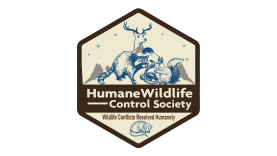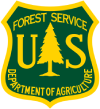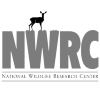Humane Wildlife Control in Columbus, OH
The Humane Wildlife Control Society recommends non-invasive solutions to resolve human-wildlife conflicts. This includes:
Determining if the issue needs to be addressed at all
Opting for preventative measures first
Opting for wildlife exclusion as opposed to trapping
If trapping is the only way to solve the problem do so humanely
The Humane Wildlife Control Society screens candidates prior to recommendation. Our process requires any company we recommend to meet the following criteria:
Is properly licensed in Ohio for wildlife control
Carries appropriate business licenses and insurance
Complies with all Ohio laws and regulations for wildlife control
Adheres to the humane principles listed above.
In Columbus, Ohio we recommend Humane Wildlife Removal Columbus for professional wildlife control services. This is a private company that charges for their services.
Contact Information:
Columbus Wildlife Control Professionals
614-502-7677
If you have any wildlife issues that can be handled by the state government agency for free, the Ohio Wildlife Commission can help.
State Contact Information: (800) 945-3543
The State Department of Agriculture may also be able to address your wildlife problem for no charge.
USDA Contact Information: (614) 728-6350
Approved Wildlife Control Methods in Columbus, Ohio: Prioritizing Humane Outcomes Principles of Humane Wildlife Control Public and Private Spaces: Adapt landscaping to use native, wildlife-resistant plants to deter animals naturally. Physical Barriers: Employ fencing and netting to prevent wildlife from accessing gardens and other sensitive areas. Visual and Auditory Devices: Implement motion-activated lights and sound devices to discourage animals from entering certain areas. Permitted Trapping: Use humane traps and follow Ohio Division of Wildlife regulations for safe capture and relocation processes. Workshops and Seminars: Offer education on coexisting with wildlife and safe interaction practices. Follow the Ohio Department of Natural Resources (ODNR) regulations, ensuring all actions align with state guidelines. Adhere to local ordinances designed to protect wildlife habitats and promote sustainable interactions. Partner with local wildlife organizations to promote awareness and volunteer opportunities for conservation efforts. Conclusion
Introduction
Columbus, Ohio, is a thriving urban center surrounded by diverse ecosystems that host various wildlife species. As human-wildlife interactions become more frequent, the city emphasizes humane wildlife control methods. This government-mandated guide outlines approved strategies focused on ensuring the well-being of both residents and wildlife.
Non-lethal Solutions: Favor methods that emphasize the protection and ethical treatment of animals.
Preventative Measures: Focus on preventing conflicts before they arise.
Compliance with Regulations: Ensure adherence to local, state, and federal wildlife laws.
Public Education and Engagement: Foster a well-informed community on wildlife issues and solutions.
Approved Wildlife Control Methods
Habitat Modification:
Secure Openings: Seal potential entry points in homes and buildings with durable materials like metal mesh and weather stripping.
Exclusion Techniques:
One-way Doors: Use these devices to allow animals to exit buildings without re-entering, reducing stress during removal.
Deterrents:
Repellents: Use non-toxic chemical repellents where appropriate, ensuring compliance with environmental standards.
Humane Trapping and Relocation:
Conflict Mitigation and Public Education:
Information Campaigns: Distribute guidelines on preventive measures and humane practices through community platforms.
Legal and Ethical Considerations
Compliance with Ohio Wildlife Laws:
Maintain transparency and proper documentation during control activities.
Wildlife Protection Ordinances:
Community Involvement
Encourage residences and businesses to engage in eco-friendly practices that deter wildlife from developing dependency on human environments.
Columbus, Ohio, is committed to humane wildlife control methods that prioritize ethical treatment and sustainable coexistence. By implementing approved strategies that emphasize prevention, education, and compliance with regulations, the city strives to maintain a balanced and harmonious environment for both its human and wildlife inhabitants.







